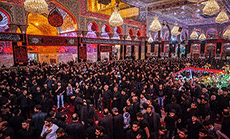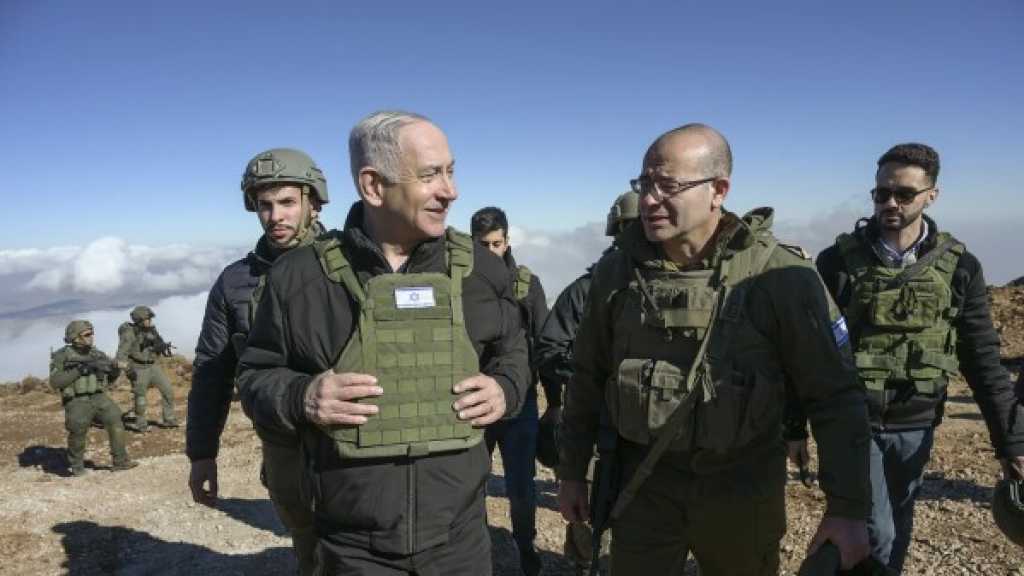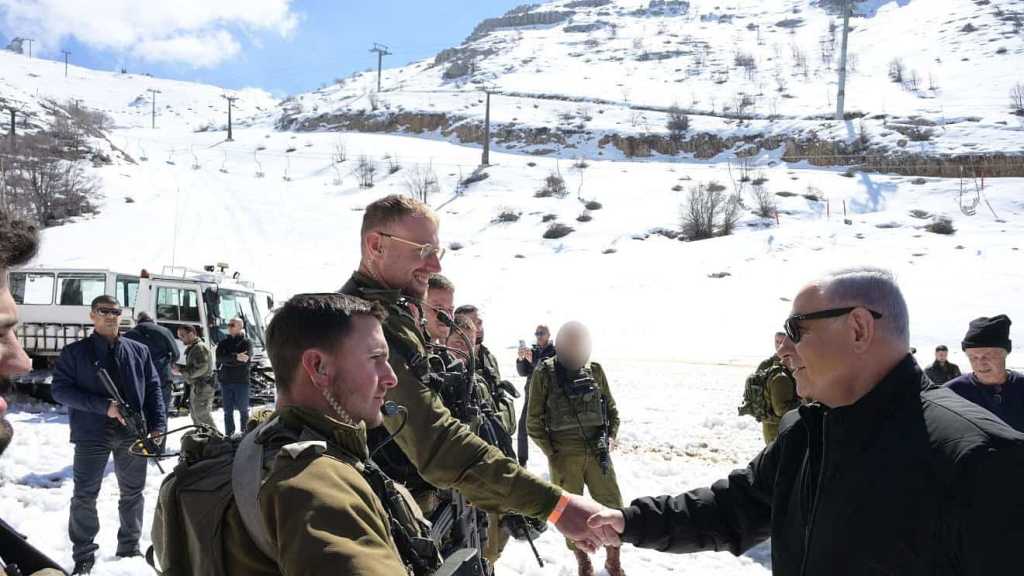Iraq: Marking Ashura ... The Strongest Message in face of Challenges.

Adel Jabouri
As on every year with the onset of the new Hijri year and the beginning of the Month of Muharram, the cities of Iraq are dressed in black along with their broad streets and narrow lanes.
Black, red, and green Husseini banners flutter over the roofs. Mosques and Husseiniyas are massed with crowds of believers who come to attend the consolation sessions that are launched on the first night of Muharram and are held for ten days when they reach their peak on the final day - the day on which Imam Hussein [Peace be upon him] was martyred during Al Taff event in year 61 A.H.. Lamentation ceremonies proceed until the 20th of Saffar which marks the fortieth day after the martyrdom of Imam Hussein [PBUH].
This anniversary is commemorated by millions of believers who walk on their feet for days, nights, and weeks towards the Holy City of Karbala.
Changing the Banners
The first night of the Holy Month of Muharram witnesses the change of the red banners that tower over the dome of Imam Hussein's [PBUH] Shrine as well as over the dome of his brother Abi Al Fadl Al Abbass' [PBUH] Shrine by black banners. Solemn grievous ceremonies are held to mark the onset of the season of lamentation. Last Saturday evening, these ceremonies started under the auspicious of both the Husseini and Abbassi Holy Shrines, and they were attended by a great number of political and religious Iraqi and non-Iraqi personalities.
Religious and political dignitaries are honored to attend these ceremonies which are broadly covered by local and international media outlets.
These ceremonies were not marked under the former regime. They came to be following the overthrow of Saddam Hussein's regime in 2003. Year after year, the banner-changing ceremonies are witnessing more and more expansion and ceremonial manifestations.
The ceremony of changing the banners is not anymore limited to the domes of Al Hussein and Al Abbass [Peace be upon them]. It has become a tradition practiced in the various holy shrines and even in some public places and squares where Husseini banners flutter.
Karbala... The Symbol and Emblem
As Iraq has a specially characterized in marking the season of Ashura Lamentation in respect of being the seat of many Holy Shrines for several Imam's of the Prophet's Household [PBUT] and their offspring and companions, Karbala is even more exceptionally special because it is the main symbol and emblem for the Husseini revolution. It also represents the field for the historic confrontation between the camp of righteousness and the camp of evil.
It carried on in representing this field over all the stages and eras that witnessed the hegemony of tyrants and the predominance of totalitarian and suppressing practices against the followers of the Prophet's Household [PBUT]. The shrine of Imam Hussein [PBUH] has been subject to acts of demolition, destruction, and profanation several times the last of which was in 1991 when the regime of Saddam Hussein brutally curbed a popular intifada.
Following the overthrow of Saddam's regime in 2003, the religious shrines - including the Shrine of Imam Hussein and that of his brother Abi Al Fadl Al Abbass [PBUT]- were not spared the terrorist Takfiri attacks via booby-trapped cars, body-belt bombs, and bombs especially on religious occasions such as the 10th of Muharram, the 20th of Saffar, and the 15th of Shaaban that marks the birthday of Imam Mahdi (May Allah make his appearance near). However, such incessant Takfiri attacks did not impede the residents of Karbala Province from marking these Husseini rituals as they did not stop millions of residents from the other provinces from making it to Karbala.
What gave Karbala a wider and more comprehensive perspective in marking these Husseini rituals is that it is pregnant with religious shrines and sites such as the shrine of Imam Mahdi, the Shrine of Imam Saddeq [PBUH] besides sites linked to the events that took place on Taff Day including the Zeinabi Hill, the Husseini Camp, and the sites of both the Right and Left Palms of Al Abbass [PBUH] among others.
Baghdad and its Husseini Banners
As Karbala is specially characterized for being the land that witnessed the grievous Taff events, the capital Baghdad is special for being a small Iraq that include the various elements of the Iraqi social composition - Shiites, Sunnites, Muslims, Christians, Arabs, Kurds, Turkmen... However, this sectarian, racial, and religious diversity did not prevent Baghdad from turning in the Holy Month of Muharram to a grand Husseini tableau that narrates the epic of sacrifices and altruism which were manifested in Karbala.
The Baghdadi cities of Karkh, Rasafah, Assader City, New Baghdad, Karradah, Zaafaraniyeh, Dora, Bayyah, Ameriyyeh, Ghazaliyeh, Shoalah, Kazemiyyeh, and Azamiyeh with their various neighborhoods and regions are crowded with black, red, and green Husseini Banners, and Husseini lamentations and consolation councils are held in each of their corners.
Ashura... The Strongest Message to "ISIL"
This year the "ISIL" Takfiri terrorism is unveiling its monstrous savage face as its senior tyrants seek to target the Husseini rituals and those who hold, mark, and partake in them. Over the past 11 years, terrorists under whatever name or group have targeted the visitors of Imam Hussein [PBUH]. Hundreds of martyrs and wounded fell in the various regions and cities and not only in Karbala. Still, that did not prevent the followers of the Prophet's Household [PBUT] and the lovers and supporters of Imam Hussein from commemorating his great revolution.
Today the anniversary of the Husseini epic coincides with a fierce conflict between the Iraqi Army and the popular volunteers groups on one hand and the "ISIL" terrorist organization on the other. The latter had been afflicted with tough defeats the last of which is its defeat in Jarf Sakher to the west of Babel Province. This might cause it to seek steadily to target the Husseini processions and groups to compensate for its defeats and to raise the morals of its elements. In the past few days, Husseini processions and groups had been subject to terrorist attacks by booby-trapped cars and bombs in Baghdad and other cities the last of which was detonating a booby-trapped car by a Husseini procession on last Monday night at the Watheq Square in the heart of Baghdad what led to the martyrdom and injury of more than 50 people.
The religious authority in Holy Najjaf via its representative in Holy Karbala Province - Sayyed Ahmad Safi - warned the terrorists against targeting the Husseini ceremonies. During the latest Friday Prayers' speech in the Holy Husseini court, the authority called for taking the utmost degrees of precautions to let the enemies of the Iraqi people miss their opportunity to stage any such attacks. In the same framework, Iraqi Premier Haider Abadi urged in a statement issued on the occasion of the onset of the Holy Month of Muharram and the commence of the new Hijri year the security bodies and the citizens in general to beware of the schemes and attempts of the terrorist Takfiri groups to spread fear and horror in the spirits of believers by targeting the Husseini processions.
Contrary to all the schemes and aspirations of the "ISIL", all expectations indicate that the numbers of people who will mark Ashura on the 10th day of Muharram and on the anniversary of the fortieth day following the martyrdom of Imam Hussein [PBUH] and over the months of Muharram and Saffar whether from inside Iraq or from abroad will surpass last year's numbers and the numbers of the previous years. This in itself is the strongest message to "ISIL" Tajfiri organization and those who back and support it.




